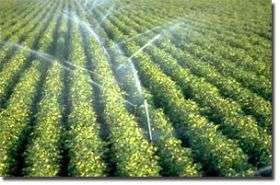Human activities contribute to California's global warming

Over the past 85 years, humans have helped shape California climate during certain seasons. But that’s not necessarily good.
Recent research by scientists at the Lawrence Livermore National Laboratory, the University of California, Merced and the National Center for Atmospheric Research shows that California temperatures have jumped statewide by more than 2.1 degrees Fahrenheit between 1915 and 2000. This warming is likely related to human activities.
Using data from up to eight different observational records, the team found the warming has been fastest in late winter and early spring.
“The trends in daily minimum and maximum temperatures over the last 50 and 85 years are inconsistent with current model-based estimates of natural internal climate variability,” said lead researcher Céline Bonfils, a former UC Merced postdoc now working at Lawrence Livermore. “It’s pretty clear that natural causes alone just can’t cut it and external factors such as greenhouse gases and urbanization come into play.”
California is not alone when it comes to warming trends. Late winter and springtime temperatures have increased in nearly all of western North America. They have been associated with a large change in atmospheric circulation in the northern Pacific, likely resulting from greenhouse gas-induced warming.
But all California climate trends during the 20th century aren’t so clear.
For example, less warming is observed in summer. This warming, which mainly occurs at night but not during daytime, is not well explained by historical climate simulations.
“We looked at observations and models and they don’t concur,” said Phillip Duffy, part of the Livermore team and a UC Merced adjunct professor. “One possible reason for this is that most models don’t include factors such as irrigation, which can influence regional climate.”
The team found the lack of a trend in summertime maximum temperatures may be associated with the rapid expansion of large-scale irrigation during the 20th century, an important factor in California that is not accounted for in the models.
“We found empirical evidence that irrigation has a large cooling effect on local summer daytime temperatures but minimal effect on nighttime temperatures,” said Bonfils, who investigated that issue in another Livermore study published in Proceedings of the National Academy of Sciences earlier this year.
Until now, cooling from irrigation may have counteracted the daytime warming from mounting greenhouse gases and urbanization.
“If this hypothesis is verified, the acceleration of CO2 emissions combined with a leveling of irrigation may result in a rapid summertime warming in the Central Valley in the near future,” said David Lobell, co-author in both studies.
What does this mean for the future climate in California?
“The 21st century may be less climatically complex than today,” Bonfils said. “Greenhouse warming is likely to be the dominant factor over today’s many climate influences.”
“Our study represents a credible first step toward the identification of the effects of human activities on California climate,” said Benjamin Santer, also part of the Livermore team.
An increase in California temperatures could have dire consequences for the state’s water system. “If human-induced climate change is occurring, societal impacts – such as impacts on our water supply – cannot be far behind,” Duffy said.
Source: Lawrence Livermore National Laboratory




















